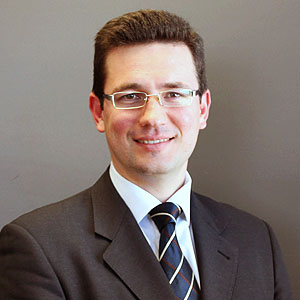Simulation for airport planning
When a system reaches a certain level of complexity (as is the case for airports), analytical calculations may not be efficient, sufficient or even possible. Simulation allows the analysis of complex systems with many interdependencies, processes and input parameters.
Static analytical formulas do not reflect the dynamics or interrelationships of complex systems. Simulation, however, can create a model that includes the dynamic effects of information and interrelationships. Hypothetical scenarios can be easily investigated by modifying input parameters.
Advantages
For planning:
- Better understanding
- More reliable planning
- Lower risk involved in decision-making
- Less need for testing in real situations
- Establishment of appropriate phases
For design:
- Optimisation of infrastructure capacity
- Balancing the overall aerodrome capacity
- Early detection of planning errors
- Identification of impediments
- Greater security
For operations:
- More efficient operations
- Implementation of proven procedures
- Reduction of the costly “trial and error” method
- Optimisation of resource allocation
- Testing different situations in a short period of time
That is why we use the AirTOp ground module to create models of ground traffic on the airside. Realistic and detailed models of airport ground distribution can be created to support airport design or air traffic simulation.
By linking airline, airport, ATC and ATFCM data, aircraft ground movements can be accurately modelled and analysed in AirTOp.
Airport simulation
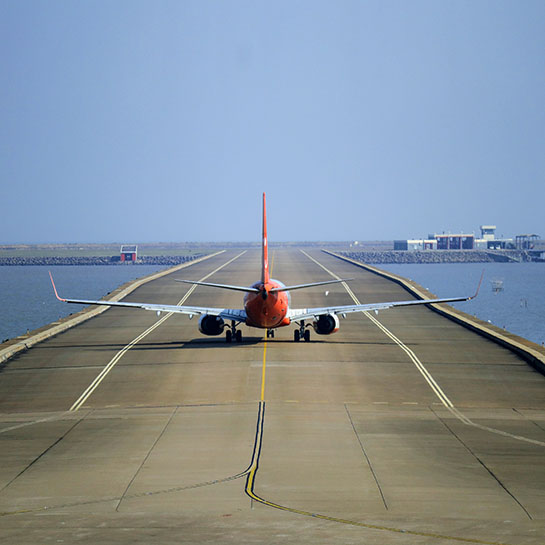
Definition of the objective
Entering the data collected
- Flight times.
- Infrastructure distribution.
- Dependence on runway operations.
- Airspace rules.
- Runway crossings.
- Taxiway routes.
- Push-pull procedures.
- Gate/parking assignment rules.
- De-icing procedures.
- Traffic rates and processing time.
- Operational configuration.
- Aircraft characteristics.
- Interviews with interested parties.
Calibration of the reference model
- Configuration of the distribution of airport facilities.
- Implementation of operating rules.
- Specification of flow object characteristics.
- Generation of flow objects from the flight schedule.
- Modelling the logic of processes and flows and their interdependencies.
- Verification of the correct implementation of the model’s logic.
- Comparison of the simulation model’s key results with the actual operations data.
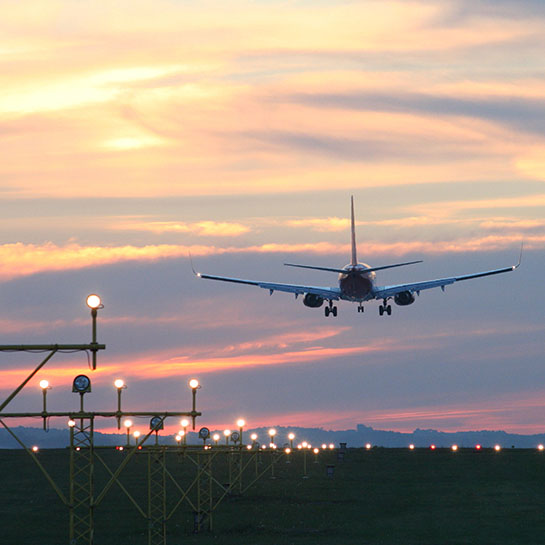
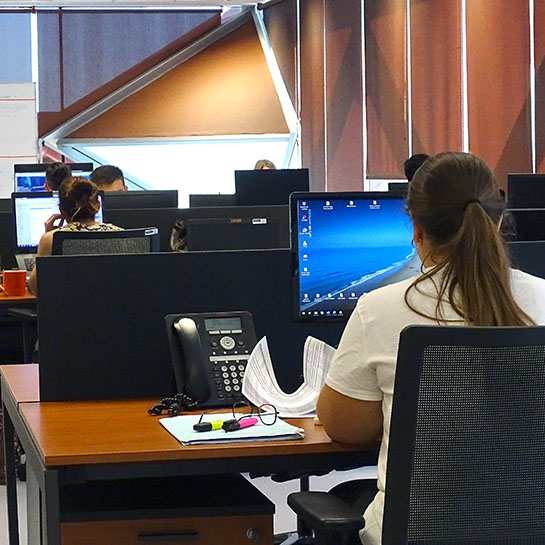
Scenario simulations
Start of the simulation of different hypotheses, according to the design requirements. This includes the following:
- Changes in distribution.
- Changes in traffic demand (through other flight schedules).
- Improved capacity through the implementation of more facilities or improved equipment and operating procedures.
- Assignment of flights or airlines to other gate areas.
- Changes in operating conditions (for example, use of runways and taxiways).
- Robustness tests.
Interpretation of results
- Verification to validate results and ensure they are realistic.
- Extraction of waiting time figures, queue length, occupancy levels, etc.
- Interpretation of numerical results and attainment of qualitative recommendations and statements.
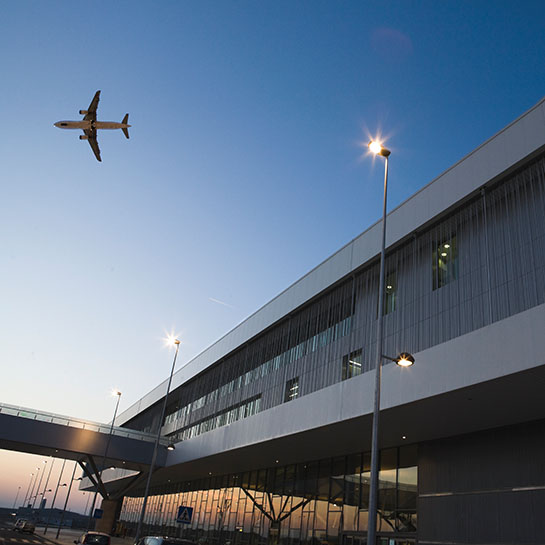

Reports and recommendations
- AIRSPACE – Flight procedures (SID, STAR, RNAV-based, etc.). Identification and evaluation of possible improvements in airspace capacity.
- AERODROME – Evaluation of the need for and location of new structures such as RET, holding bays, connected taxiways, etc. with the aim of improving capacity and eliminating problem areas.
- APRON – Evaluation of different configurations and redistribution of parking spaces, ground procedures, taxiing sequences, parking restrictions, etc. The software produces a Gantt chart that includes the use of parking spaces, allowing the calculation of critical parameters such as average delays, push-back times, hourly capacity, etc.
- FUEL CONSUMED ON THE GROUND AND EMISSIONS from aircraft and APU engines, which can be accurately modelled with the aim of reducing emission levels.

